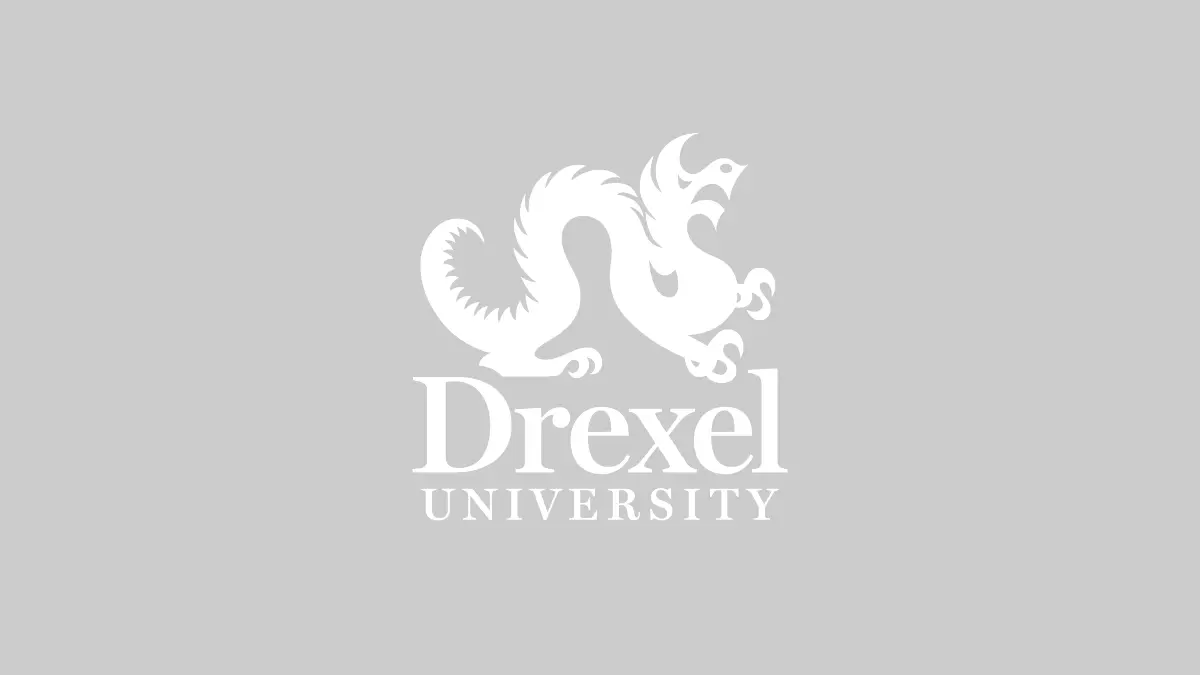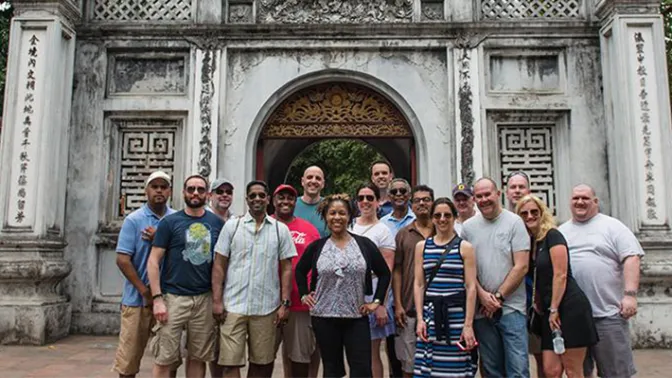Drexel Students Partner With World-Leading Scientists to Overcome Environmental Challenges
Four Drexel University students are collaborating with world-renowned scientists for the revolutionary Atacama Large Millimeter/Submillimeter Array (ALMA) Project. Based in the Atacama region of Chile, ALMA is an organization of scientists brought together from across the globe to construct and administer the world’s largest radio telescopes, designed to allow scientists to listen for clues to the beginnings of the universe. The students’ role in the project is to help ALMA reduce its carbon footprint and shore up energy resources.
Headed by LeBow College of Business professors Dr. Hande Benson, associate professor of decision sciences, and Neil Desnoyers, instructor in decision sciences, the students include Adam Marsh and Isaac Babik, both business and engineering majors, and Alfred Uzokwe Jr. and Ben Thomas, both mechanical engineering majors. The students are spending a six-month co-op—Drexel’s employment program designed to give students real-world work experience—helping the scientists overcome a unique set of practical challenges presented by the region in which they are working.
Because the site is extremely remote, it will continue to remain “off the grid” and dependent on generating its own power. Currently, the site is powered by inefficient, cumbersome, and loud diesel generators, and the scientists are anxious to learn about cleaner, less expensive options for power. They’re also interested in learning about long-term housing solutions since they currently reside in temporary facilities. Due to time constraints, the scientists have been unable to research their best options. As part of the students’ assignment and responsibilities, they will offer both housing and energy-generation solutions once their research is complete. The scientists plan to implement these recommendations in drafting requests for proposals for firms to construct these long-term solutions.
The students first began their research in September and recently returned from a fact-finding trip in late October, during which they presented their early findings to the scientists, who provided feedback and direction. The students will travel to Chile again to present their final findings to the scientists in March.
Background on the Partnership
Drexel University’s partnership with ALMA began with a fateful meeting in March of 2008. Dr. Frank Linnehan, LeBow’s associate dean for graduate and undergraduate studies, was on a flight to Chile’s capital city, Santiago, with 30 LeBow College students taking part in an International Residency that offered them an opportunity to experience what it’s like to do business abroad. Seated beside Linnehan on the flight was another academic, Dr. Richard Prestage, a native of the United Kingdom who had just been appointed as the head of the Department of Technical Services at the ALMA Observatory. He confided in Linnehan that he faced a great challenge. He had to hire a large staff—everyone from concrete specialists to local construction workers to academics from around the globe—for an evolving scientific site still under construction in a remote part of the world.
By the end of the 10-hour flight, Linnehan and his colleague, Bang Nam Jeon, a professor of economics at LeBow also on the trip, had made tentative plans for some Drexel students to visit the burgeoning site and gain an understanding of what was involved in such a complex undertaking.
In 2008, Drexel developed a strategic initiative to fund undergraduate research co-ops, which enable undergraduates to work with faculty on research projects in LeBow and other colleges at Drexel.
After a series of e-mail exchanges and teleconferences culminating with Prestage visiting Drexel’s campus this past summer, the pair decided that ALMA’s energy project was a fitting research opportunity.
The team and the scientists have used teleconferencing to allow participants scattered around the world to brainstorm, exchange ideas, and even—with the use of an internet wiki—to share blueprints and statistics from the construction site.
Background on ALMA
An international project administered under the auspices of the National Radio Astronomy Organization (NRAO), ALMA has brought together scientists from Europe, East Asia, North America, and Chile to construct and administer what will be among the most powerful telescopes ever built.
With 66 high-precision antennas working together at millimeter and submillimeter radio wavelengths, the ALMA project—known as the “Telescope Project” on Drexel’s campus—will allow scientists all over the world to detect molecules in space via radio frequencies, “at frequencies we’ve never seen before,” says Jeff Kern of NRAO. “It [will be] like someone suddenly gave you a pair of glasses that make your eyes work better than anything you’ve ever seen before.”
More information at http://www.almaobservatory.org/
###
FOR MORE INFORMATION: Contact Lisa Litzinger, Assistant Director of Communications, LeBow College of Business, at 215.895.2897 or lml64@drexel.edu
About Drexel University’s LeBow College of Business
Recognized by BusinessWeek, Entrepreneur-Princeton Review, Financial Times, and U.S.News & World Report for superior programs, Drexel University’s LeBow College of Business empowers, enriches and inspires future business leaders through an innovative, strategic approach to business education in its master’s, bachelor’s and doctoral programs. LeBow College is accredited by AACSB International—the Association to Advance Collegiate Schools of Business. Ranked by U.S.News & World Report as one of the best national doctoral universities, Drexel is one of fewer than 30 private universities classified by The Carnegie Foundation as Research Universities (high research activity).

